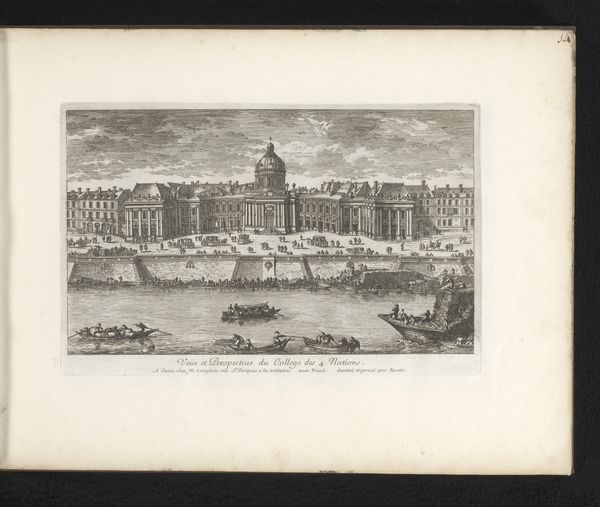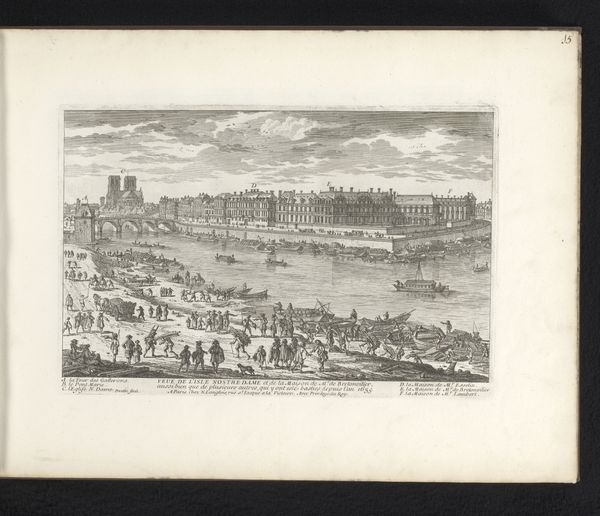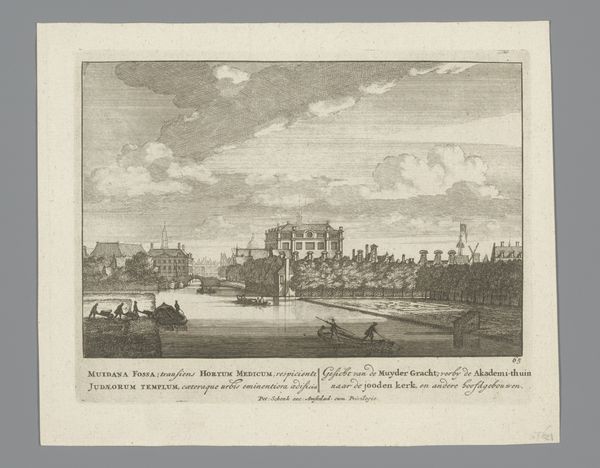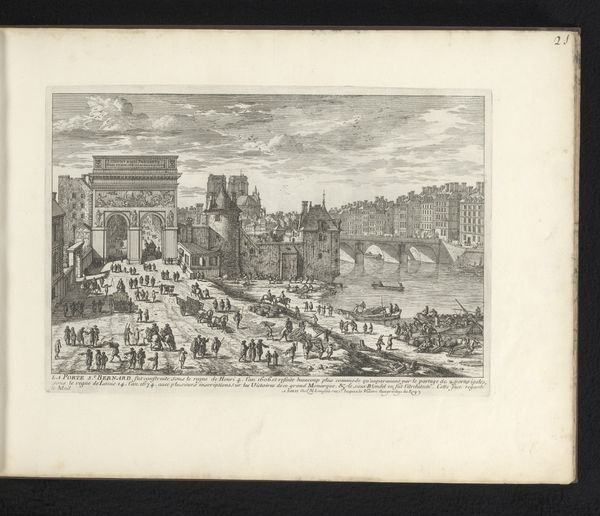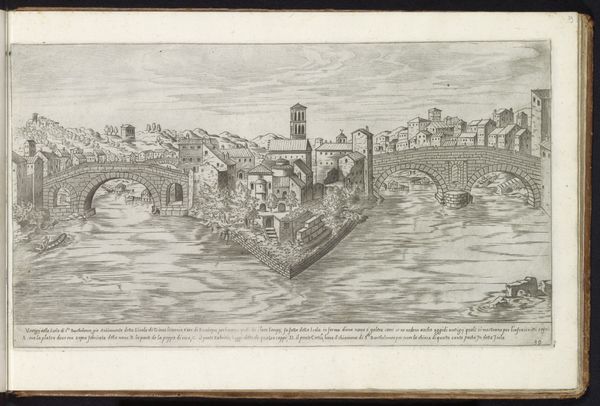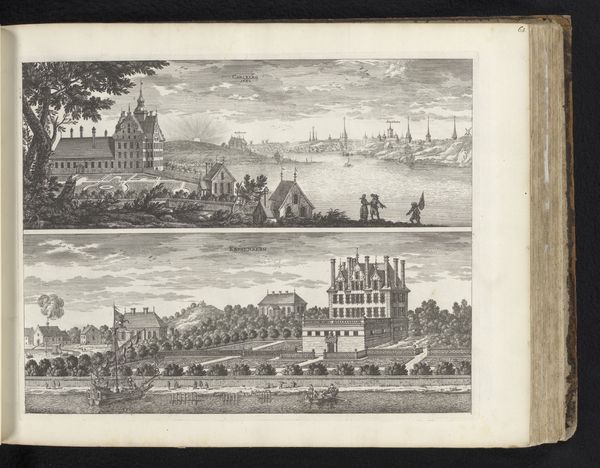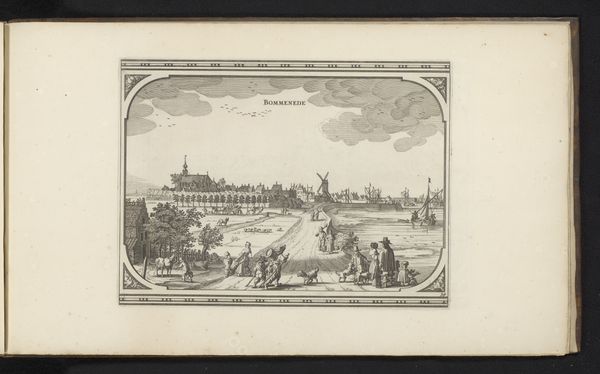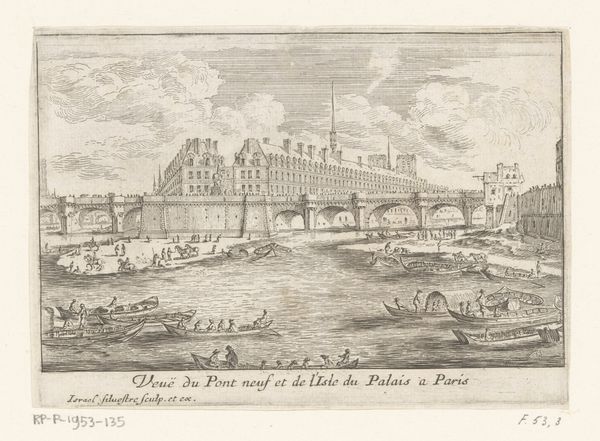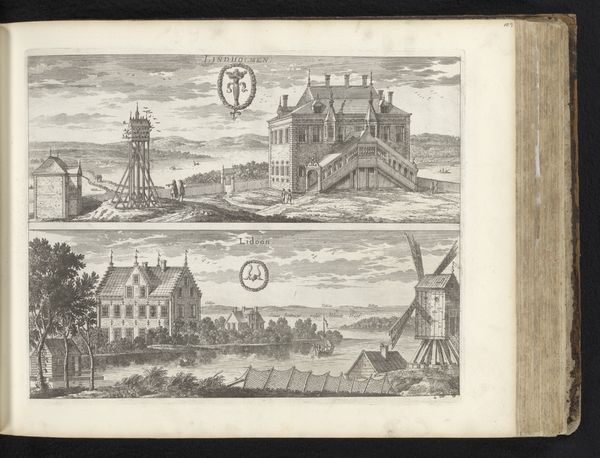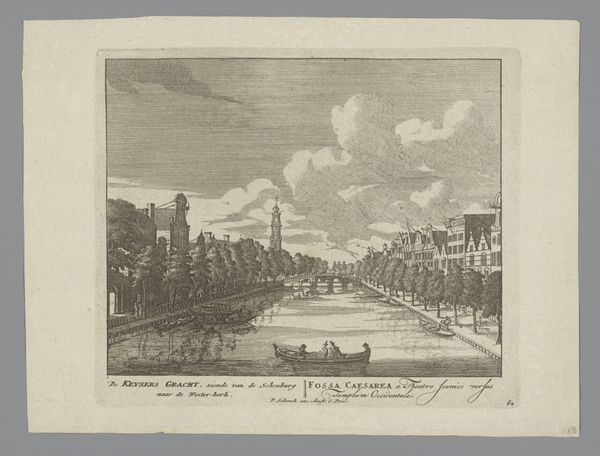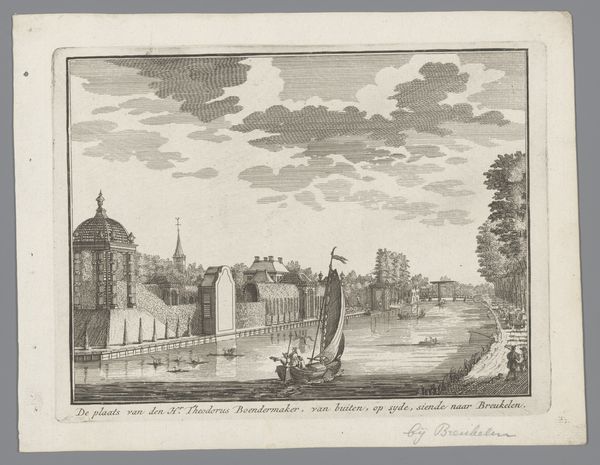
drawing, etching, paper, ink
#
pen and ink
#
drawing
#
aged paper
#
baroque
#
pen drawing
#
etching
#
sketch book
#
landscape
#
paper
#
personal sketchbook
#
ink
#
pen-ink sketch
#
pen and pencil
#
pen work
#
sketchbook drawing
#
cityscape
#
sketchbook art
Dimensions: height 198 mm, width 289 mm
Copyright: Rijks Museum: Open Domain
Curator: What a beautiful, busy scene! The light playing on the water, all those little figures bustling about...it feels so full of life, like stepping back into a very detailed memory. Editor: Indeed. We are looking at Adam Perelle's "Gezicht op de Porte de la Conférence," dating from about 1670 to 1695. This pen and ink and etching rendering shows the Porte de la Conférence in Paris with considerable architectural detail and much attention given to social life around the buildings. It now resides in the Rijksmuseum collection. Curator: The city looks so picturesque in those days, especially around the Porte de la Conférence. All of these small characters along the water side makes the image even more interesting; however, their life might have been difficult. What did that location symbolize back then, socially or politically speaking? Editor: The Porte de la Conférence was a monumental gateway, but also very much part of daily life of ordinary Parisians. As Perelle illustrates, these monumental constructions, like museums today, acted as both backdrops and stages for displays of power but were simultaneously integrated into everyday existence. The etching medium would have also aided circulation of the Parisian imagery far and wide to cement political messaging. Curator: Thinking about the etching itself, do you see how the lines get denser near the buildings? That contrast gives such depth, but it also subtly implies a sort of…heaviness about the architecture of these times, especially around buildings in France that often are the sign of Royal or Ecclesiastic power. Editor: That is an astute observation. The varying line weight not only creates depth, but subtly alludes to the imposing weight of power and authority represented by such grand structures. The placement in relation to everyday figures gives us the understanding of how public spaces were starting to change with city expansion plans in France in the second half of the 17th Century. Curator: This image just pulled me right in. It makes me feel alive. You really have a sense that the city has this deep, rooted, flowing energy in all those little inhabitants. Editor: Absolutely. Perelle managed to capture the way structures reflected social hierarchies while framing the dynamism of early modern urban life with surprising accuracy. A truly precious moment captured in ink, revealing its complexities to anyone who chooses to study it.
Comments
No comments
Be the first to comment and join the conversation on the ultimate creative platform.
